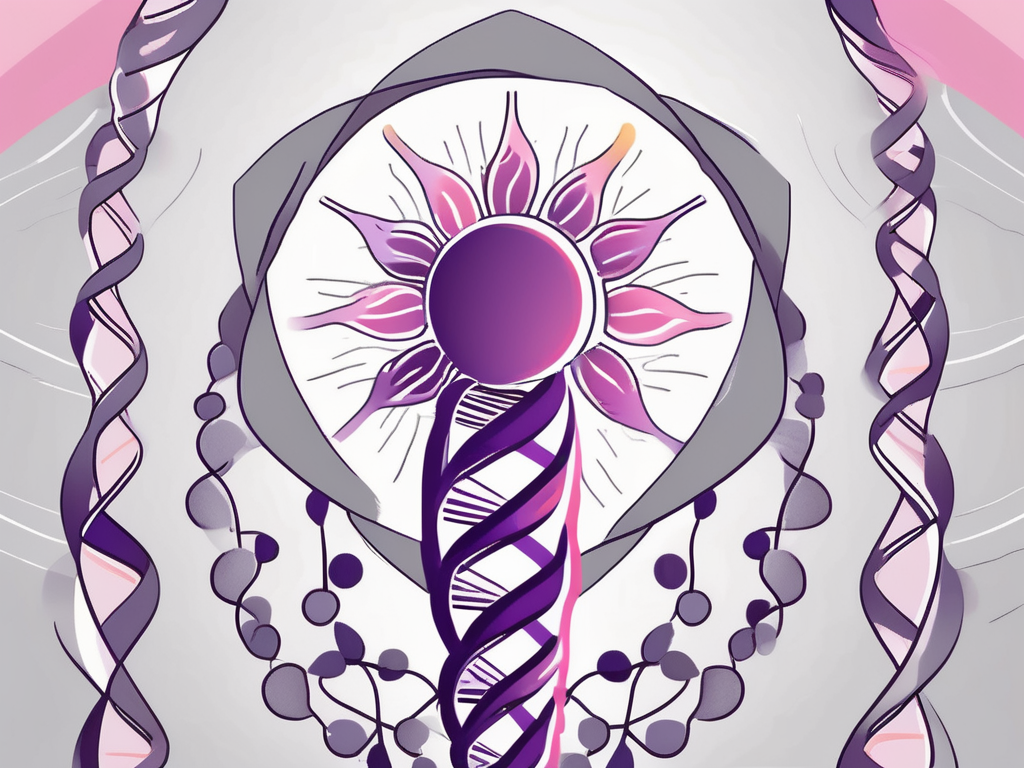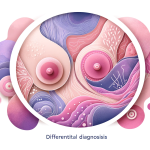This article delves into melanoma, highlighting the pivotal role of genetics and UV exposure in its development. It underscores the importance of early detection through changes in moles, using the ABCDE rule for self-examinations, and the necessity of professional skin screenings. Special emphasis is placed on genetic factors, including CDKN2A and BRAF mutations, which increase melanoma risk, advocating for genetic testing and counseling for at-risk individuals. It also stresses the importance of regular surveillance for those with a genetic predisposition and promotes patient education on sun safety and skin health management to prevent melanoma and ensure early intervention.
Melanoma, a type of skin cancer, is a complex disease with multiple factors influencing its development. While exposure to UV radiation is widely recognized as a major risk factor, recent research has shed light on another important aspect: genetic susceptibility. Understanding the role of genetics in melanoma development is crucial for both prevention and early detection, enabling individuals to take necessary steps in managing their risk effectively.
Understanding the Basics of Melanoma
Before delving into the genetic aspects, it is important to grasp the basics of melanoma. This type of skin cancer develops when the pigment-producing cells, called melanocytes, become abnormal and grow uncontrollably. It can occur anywhere on the skin, including areas not exposed to the sun. Early detection is vital, as melanoma can spread to other parts of the body if left untreated.
Common warning signs of melanoma include changes in the appearance of moles or skin lesions, such as asymmetry, irregular borders, varied colors, and a larger diameter. It is essential to stay vigilant and regularly examine your skin for any such changes.
Melanoma is a serious and potentially life-threatening form of skin cancer. It is responsible for the majority of skin cancer-related deaths worldwide. While anyone can develop melanoma, certain factors increase the risk, including excessive sun exposure, a history of sunburns, fair skin, a family history of melanoma, and having many moles or atypical moles.
When melanoma is in its early stages, it is often curable with surgical removal. However, if the cancer has spread to other parts of the body, the prognosis becomes more challenging. Therefore, it is crucial to be aware of the warning signs and seek medical attention promptly if you notice any changes in your skin.
Regular self-examinations are an important part of melanoma prevention and early detection. By familiarizing yourself with your skin’s normal appearance, you will be better equipped to identify any changes that may indicate the presence of melanoma. It is recommended to perform a thorough skin check every month, paying close attention to areas that are frequently exposed to the sun, such as the face, neck, arms, and legs.
In addition to self-examinations, it is advisable to have regular skin cancer screenings performed by a dermatologist. These screenings involve a thorough examination of your skin, including areas that may be difficult for you to see on your own. Dermatologists are trained to identify suspicious moles or lesions and can perform biopsies if necessary.
Prevention is key when it comes to melanoma. Protecting your skin from the sun’s harmful ultraviolet (UV) rays is crucial in reducing the risk of developing this type of skin cancer. This includes wearing sunscreen with a high SPF, seeking shade during peak sun hours, wearing protective clothing, and avoiding tanning beds.
In conclusion, understanding the basics of melanoma is essential for early detection and prevention. By staying informed about the warning signs, regularly examining your skin, and taking necessary precautions to protect yourself from the sun, you can reduce your risk of developing melanoma and ensure a healthier future.
The Role of Genetics in Melanoma Development
Research has shown that genetics can significantly influence an individual’s susceptibility to melanoma. Certain gene mutations can increase the risk of developing this type of skin cancer, even in the absence of excessive sun exposure. Understanding these genetic factors is crucial for identifying individuals who may be at a higher risk and implementing appropriate preventive measures.
One of the most well-known genetic mutations associated with melanoma risk is the CDKN2A gene mutation. When this gene is altered, the body’s natural defense against the uncontrolled growth of melanocytes is compromised, making individuals more susceptible to developing melanoma. Genetic testing can help identify individuals with CDKN2A mutations, allowing for personalized surveillance and management strategies.
In addition to the CDKN2A gene mutation, other genetic factors have also been linked to melanoma development. For instance, mutations in the BRAF gene have been found in a significant number of melanoma cases. The BRAF gene is involved in regulating cell growth and division, and when it is mutated, it can lead to the uncontrolled growth of melanocytes and the formation of melanoma tumors.
Furthermore, studies have identified several other genes that may play a role in melanoma susceptibility. These include the MC1R gene, which is responsible for determining skin and hair color, and the TP53 gene, which is known as the “guardian of the genome” due to its role in preventing the formation of cancerous cells. Mutations in these genes can increase the risk of melanoma development.
Understanding the genetic basis of melanoma is not only important for identifying individuals at higher risk but also for developing targeted therapies. Researchers are actively investigating how specific gene mutations contribute to melanoma progression and are exploring the potential of targeted therapies that can selectively inhibit the growth of melanoma cells with these mutations.
Moreover, genetic research has also shed light on the hereditary nature of melanoma. It has been observed that individuals with a family history of melanoma are at a higher risk of developing the disease themselves. This suggests that certain genetic factors can be passed down from generation to generation, increasing the susceptibility to melanoma within families.
Genetic counseling has become an essential component of melanoma management, particularly for individuals with a family history of the disease or those who have been identified as carrying specific gene mutations. Genetic counselors can provide information about the inheritance patterns of melanoma and help individuals make informed decisions about genetic testing, screening, and preventive measures.
In conclusion, genetics plays a significant role in melanoma development. Understanding the various gene mutations associated with melanoma risk can help identify individuals who may be at a higher risk and enable the implementation of personalized preventive strategies. Ongoing research in this field continues to expand our knowledge of the genetic basis of melanoma and holds promise for the development of targeted therapies in the future.
Identifying Genetic Markers for Melanoma Risk
Advances in genetic research have led to the identification of various genetic markers associated with melanoma risk. These markers can help determine an individual’s likelihood of developing the disease and guide appropriate preventive measures.
One such marker is the presence of multiple atypical moles, also known as dysplastic nevi. These moles have irregular shapes, colors, and borders, and individuals with a higher number of dysplastic nevi are at an increased risk of developing melanoma. Regular monitoring and early removal of these moles, when necessary, can significantly reduce the risk of melanoma.
High Susceptibility Loci Associated with Hereditary Melanoma
In addition to specific gene mutations, researchers have identified certain high susceptibility loci associated with hereditary melanoma. These loci are regions of the genome that contain genes or genetic markers linked to an increased risk of developing melanoma. By honing in on these loci, scientists can gain further insights into the genetic underpinnings of melanoma and develop more targeted prevention strategies for at-risk individuals.
It is important to note that while genetic factors play a significant role, melanoma development is often multifactorial. Environmental factors, such as exposure to UV radiation, also contribute to the disease’s progression. Therefore, it is essential to adopt a comprehensive approach to reduce the risk of melanoma, incorporating both genetic insights and sun-safe practices.
Surveillance and Management
For individuals at higher risk of melanoma due to genetic factors, regular surveillance is essential. This may involve skin examinations conducted by healthcare professionals or self-examinations performed at home. Adopting a proactive approach to monitoring any changes in the skin can lead to the early detection of melanoma, when treatment outcomes are generally more favorable.
Moreover, individuals with a family history of melanoma or genetic markers associated with increased risk may be eligible for additional screening methods, such as dermoscopy or mole mapping. These techniques allow for a detailed assessment of the skin and help identify potential abnormalities that may require medical intervention.
Genetic Counselling with CDKN2A Pathogenic Variants
Upon receiving a positive genetic test result for CDKN2A pathogenic variants, it is crucial to seek genetic counseling. Genetic counselors can provide personalized guidance and support, helping individuals understand their specific risk and empowering them to make informed decisions regarding their healthcare.
During genetic counselling sessions, individuals can discuss various risk management strategies, including regular skin surveillance, the importance of sun protection, and potential preventive measures. These discussions, combined with ongoing monitoring, can significantly improve outcomes and provide peace of mind for individuals concerned about their genetic predisposition to melanoma.
Patient Education on Prevention and Screening
Education plays a vital role in preventing melanoma and promoting early detection. By raising awareness about the genetic aspects of melanoma, individuals can make informed choices and take proactive steps in reducing their risk.
Efforts should focus on educating the public about the importance of regular skin examinations, self-examinations, and sun-safe practices. Public health campaigns, community outreach programs, and online resources can all contribute to empowering individuals with the knowledge needed to protect their skin and detect melanoma at its earliest stages, when successful treatment is more likely.
In conclusion, understanding the genetic susceptibility to melanoma is crucial for effective prevention and early detection. By recognizing the role of genetics in melanoma development, individuals can take proactive steps to manage their risk and protect their skin. With ongoing research and increased awareness, we can continue making strides towards reducing the burden of melanoma and improving outcomes for those affected by this disease.






